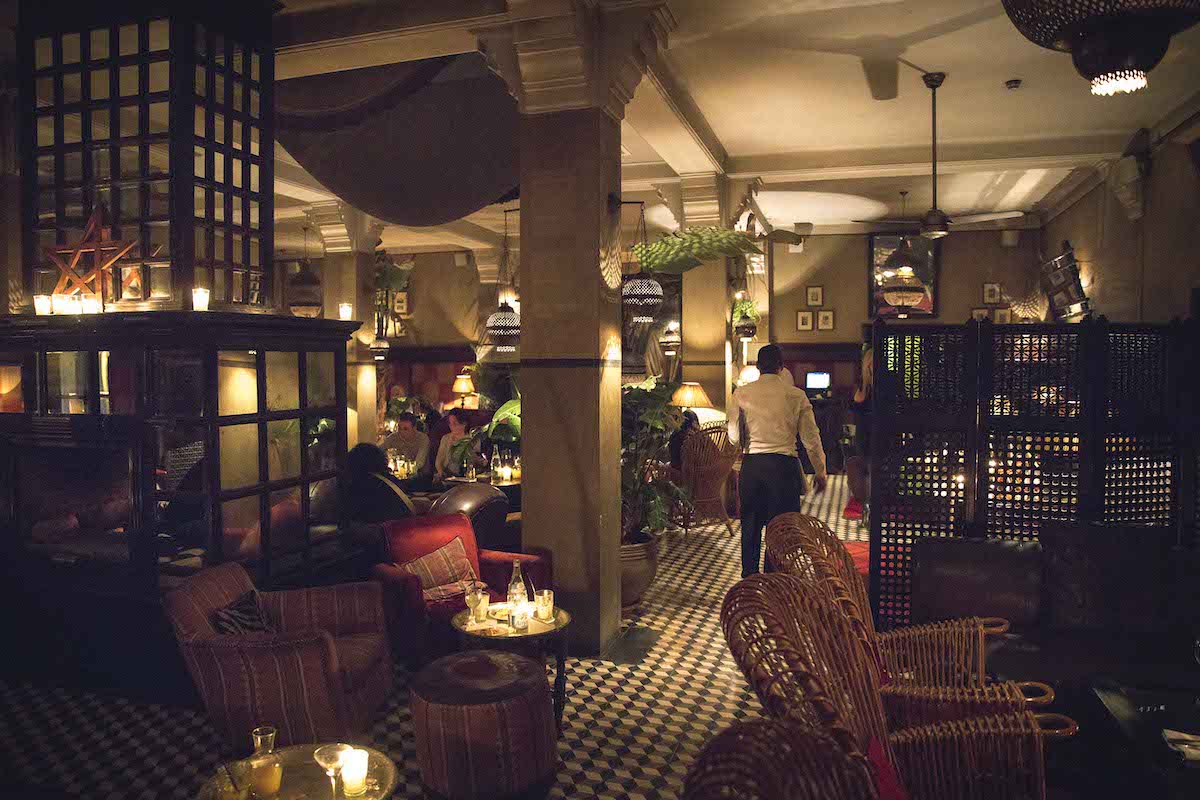
Pascal Montary
While whiling away the hours wistfully awaiting when we can travel once again, a recent property review of The Grand Café de la Poste in Marrakech has us excited to return to the hospitality industry when the time is right. Until then, we at JustLuxe hope you enjoy this property review to whet your appetite for travel post-COVID-19.
Moorish charm meets French Colonial spirit at the chic brasserie, Grand Café de la Poste.
With its labyrinthine souks, opulent palaces and serene gardens to explore; storytellers and snake charmers to behold, nowhere evokes romantic notions of the faraway and exotic quite like Marrakech. A longtime favored haunt of the bohemian jet set, whether visiting for the first or fifth time the former Colonial Capital of the Kingdom of Morocco dazzles and enchants. But for those seeking an iconic Marrakechi landmark, nowhere delivers elegant old-world charm like Grand Café de la Poste in the trendy ‘new town’ of Guéliz.
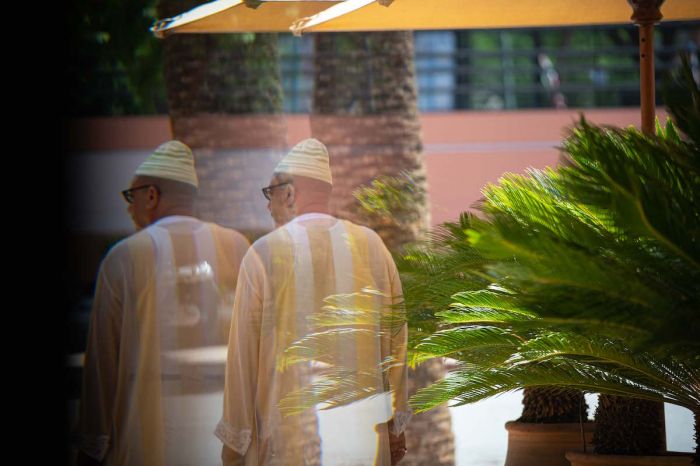
Pascal Montary
La Ville Nouvelle
While many equate a trip to Morocco’s Red City with its bustling Jemaa el-Fnaa square and ancient walled medina, the trendy Guéliz district offers a different perspective. Designed in the early 20th century by French architect and urban planner Henri Prost, the wide avenues and art deco facades of “Ville Nouvelle,” the first town to be built outside the medina, remain today.
Its ordered network of streets that spiral outward from Jardin 16 Novembre and tree-lined central Boulevard Mohammed VI – once Avenue de France – are home to upscale art galleries, museums, boutiques, and bars. Enjoying a commanding spot in the heart of this buzzy neighborhood, glamorous Parisian-style brasserie Grand Café de la Poste is still considered one of the city’s most iconic haunts.
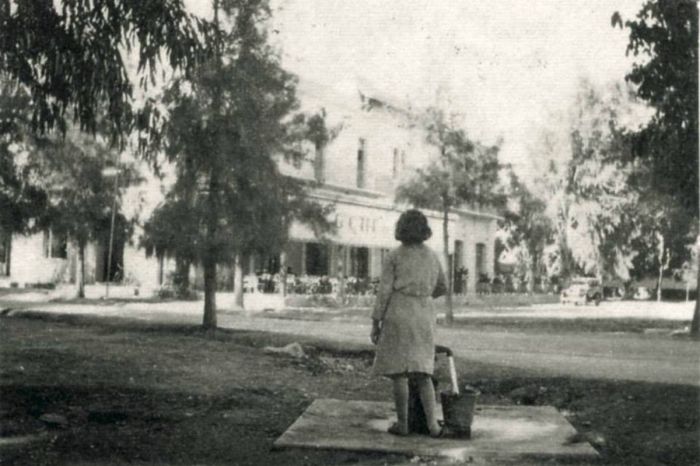
Grand Cafe de la Poste
Hypnotic History
Constructed under the French Protectorate in the early 1920s, the authentic Moorish building formerly served as a café and hotel for the adjoining post office. Colonial administrator and French army General Lyautey and painter Jacques Majorelle (creator of Jardin Majorelle) were frequent visitors; it was also a favorite of his Majesty, the Pasha Thami El Glaoui, who, at one point, transformed it into his namesake Café Pacha. From the late 1960s onwards, the spot became a go-to for fashion designer Yves Saint Laurent.
After being shuttered for fifteen years, and an unsuccessful attempt to locate its former owners, artists and sculptors turned restaurateurs Héléna Paraboschi and Pierre Pirajean (the French “power couple” behind Bô Zin, another local hot spot) bought the building in 2002. They teamed up with Paris-based architecture firm Studio KO (notable projects include Musée Yves Saint Laurent Marrakech and London Hotel, Chiltern Firehouse) to breathe new life into the property with a grand re-opening in 2005.
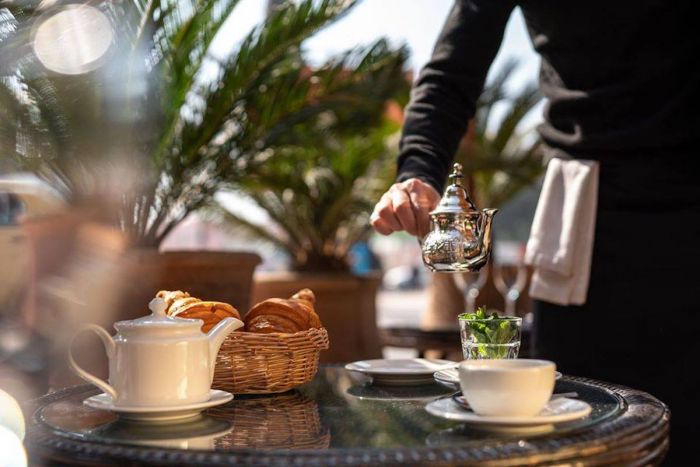
Pascal Montary
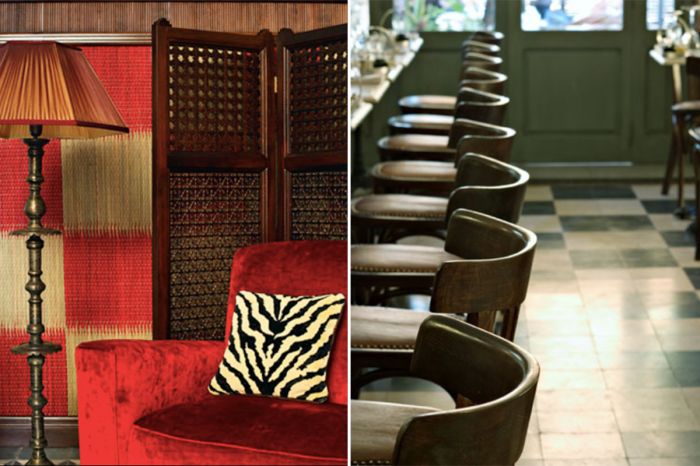
Studio KO
Moorish Charm meets Colonial Chic
Celebrated for their timeless aesthetic and “anti-brand” design approach, Studio KO principles Olivier Marty and Karl Fournier carefully restored the period building in a warm 1930s colonial style with Moorish accents. Their attention to detail and authenticity meant master craftsmen recreated much of the furniture based on original antique flea market finds.
The result is romantic and sophisticated with a wistful old-world ambiance – think rattan chairs, potted palms, dark wooden shutters, brass lanterns and cement tile floors inspired by Andalusian zelliges – alongside more contemporary touches.
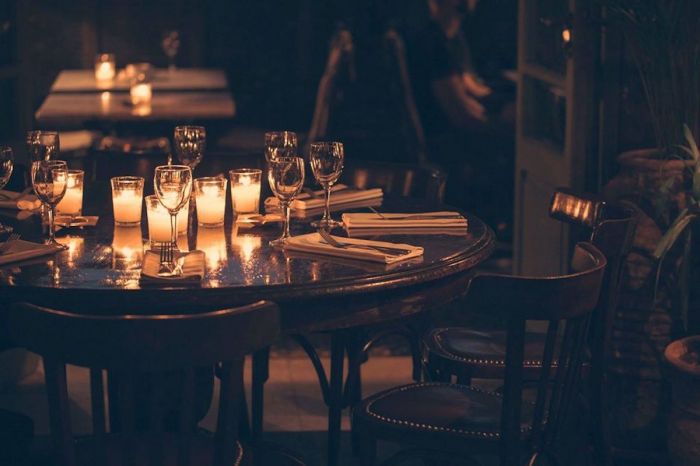
Pascal Montary
On the ground floor, the wraparound terrace is shaded by palms and cooled by spinning ceiling fans. A portrait of Mohammed V clad in aviator attire presides over the interior dining room whose tables – candlelit every evening – dot a classic black and white checkerboard floor. A grand central staircase leads to the mezzanine where a log burning fireplace surrounded by leather armchairs, red velvet banquettes, and moucharabieh side tables afford numerous cozy corners for more intimate tête-à-têtes.
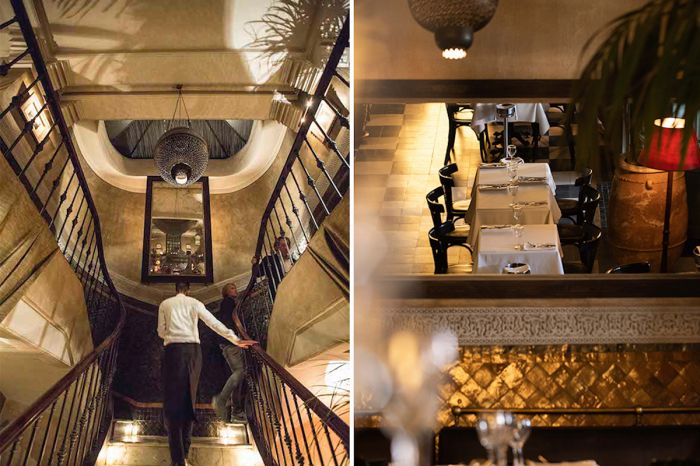
Pascal Montary
Bistro Classics with a Side of Jazz
And from the kitchen led by chef Philippe Duranton, travelers, ex-pats and well-heeled locals alike are treated to a comprehensive menu of beautifully prepared French bistro classics and regional Moroccan cuisine. Local ingredients – sourced from small organic producers or grown in a nearby garden under the direction of chef Duranton himself – are fresh, seasonal, and shine across each dish. Gallic signatures include a traditional steak tartare, salad niçoise, and 7-hour lamb shank while regional fare ranges from a monkfish and prawn tajine to the freshly shucked Dahkla oysters.
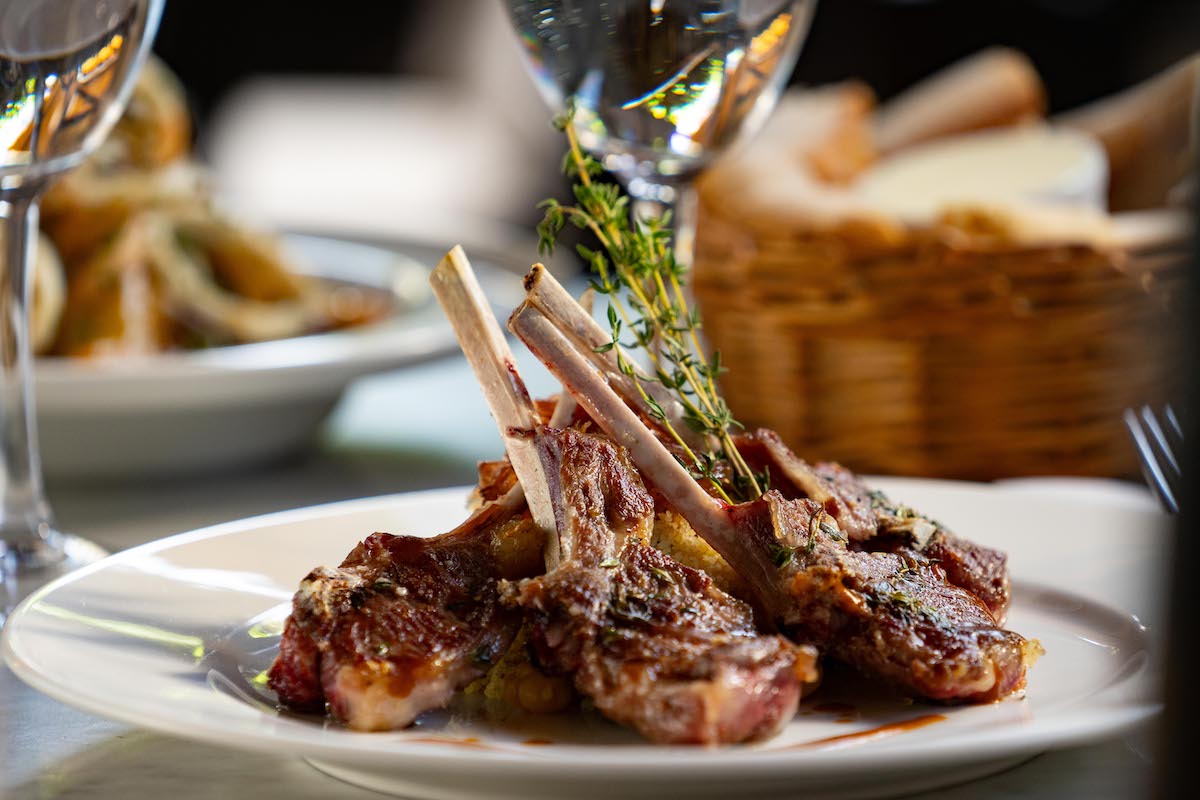
Pascal Montary
From the wine list, there are several excellent Moroccan labels to pair alongside any number of courses. Domaine De Sahari, one of the most famous estates in Morocco whose vines are grown in the foothills of the Atlas Mountains, and S de Siroua from Thalvin – Domaine Ouled, the country’s oldest working winery, are two of the top sellers.
On that next trip to Marrakech do not pass up the chance for a leisurely brunch – complete with buttery croissants, fresh fruits, and coffee – or late lunch on the terrace after strolling the nearby galleries. Alternatively, make it a date night with sundowners followed by dinner; every Sunday evening a rotating lineup of guest musicians provides a live jazz soundtrack playing everything from soul to swing guitar.
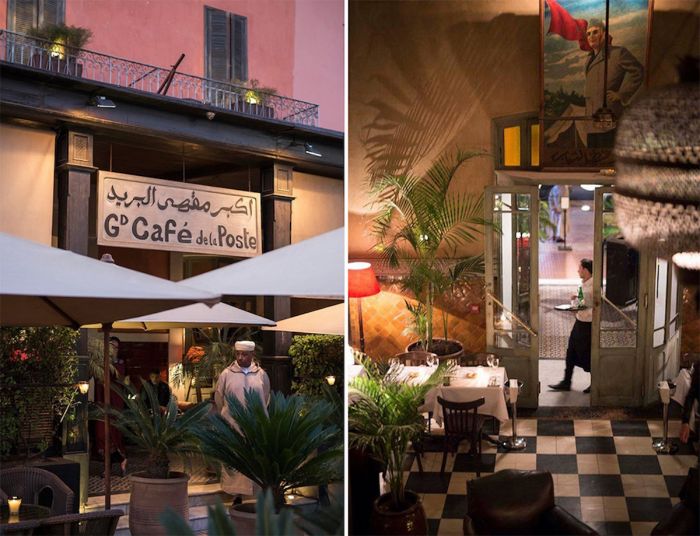
Pascal Montary
Open daily from 8 a.m. until 1 a.m., you’ll find Grand Café de la Poste on the Corner of Boulevard el-Mansour Eddahbi and Avenue Imam Malik, 40000 Marrakech. Call ahead (00 212 2443 3038) or email for a reservation.
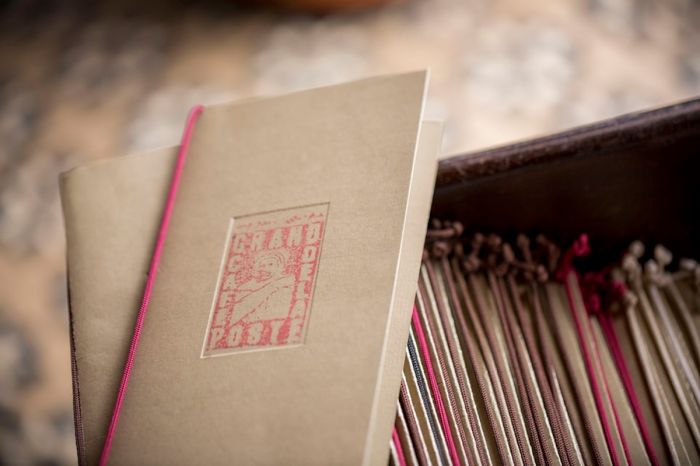
Pascal Montary
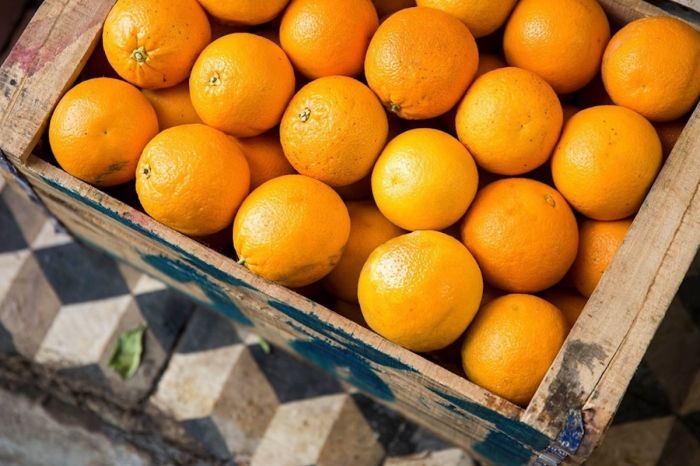
Pascal Montary
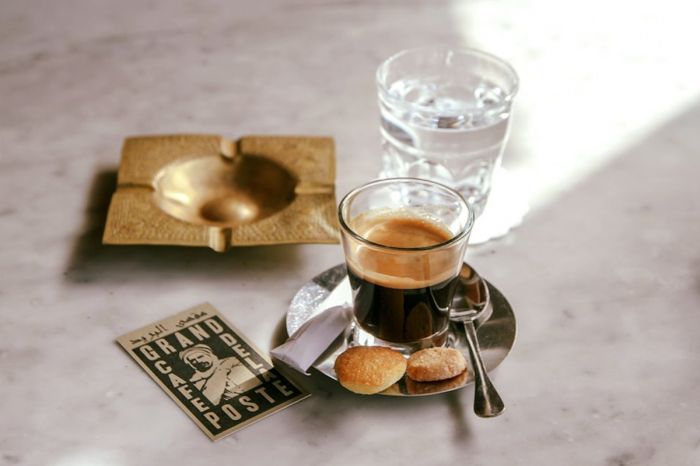
Pascal Montary
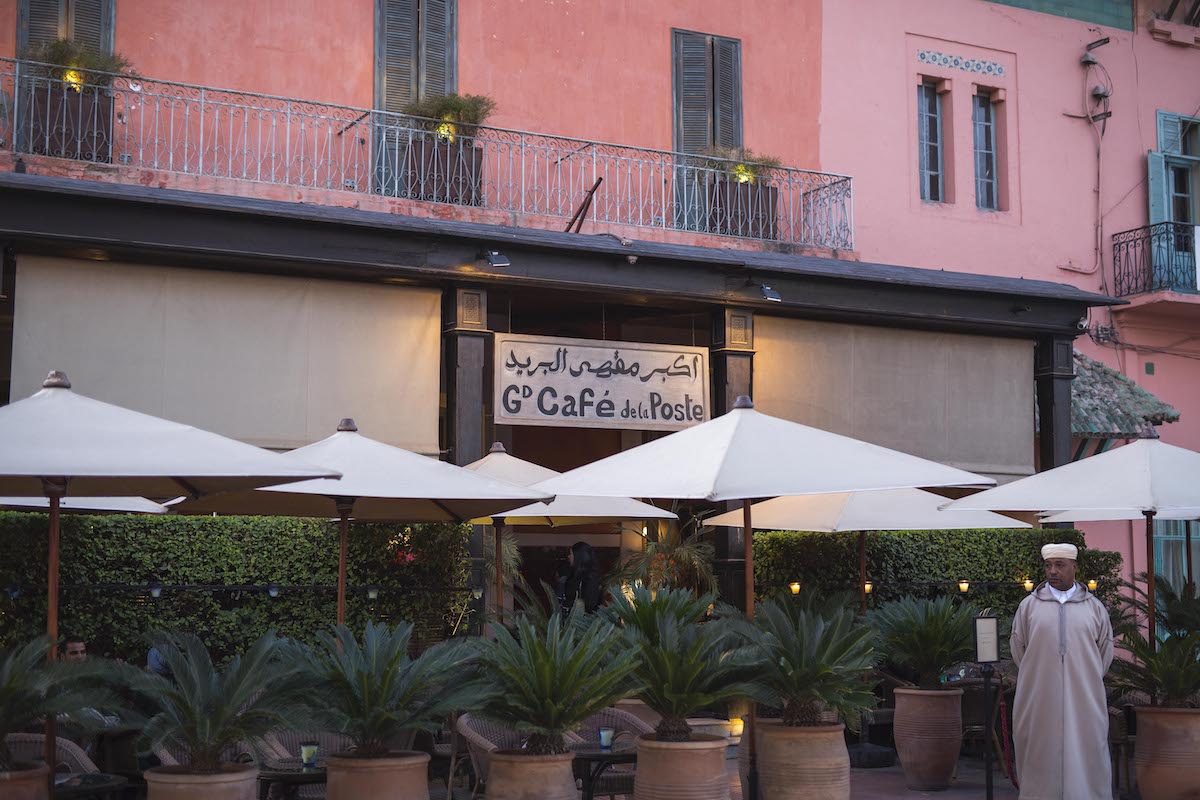
Pascal Montary
